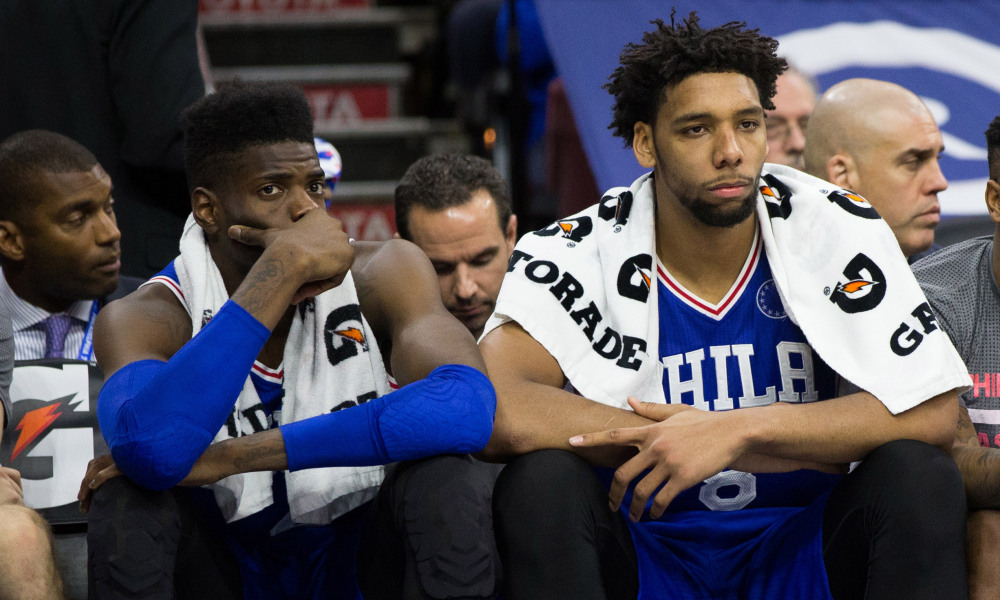In the quarter-century since it’s inception, Apollo Global Management, LLC has feasted on famines to become a multi-billion dollar entity. Their investment in LyondellBasell Chemical seven years ago was arguably their most successful. At that point in 2009, LyondellBasell was inhaling monumental financial losses. It was the corporate equivalent to asbestos filling the lungs. In January 2009, they declared bankruptcy in a Manhattan federal court claiming they held $19 billion in debt. Essentially, every time CEO Jim Gallogly exhaled, the noxious zephyr would send stacks of Banjamins floating into a furnace until their debt accumulation was 13 times their operating earnings.

Instead of going under and having the LyondellBasell board wash car windows with a squeegee at stop lights, Apollo Global invested in a third of their company. The goal wasn’t magnanimity. It was to buy shares at a fraction of the price and check out once they were chewing solid foods again.
In November of 2013, Apollo’s bet paid off tenfold when they sold the final parcels of their $1.5 billion investment in LyondellBasell. The final tabulation was a $10.5 billion profit for Apollo. It was a kingmaking maneuver which established them as a titan in the asset management industry.
One of Apollo’s founders was Atlanta Hawks majority owner Antony Ressler. Another is Philadelphia 76ers majority owner Joshua Harris. While Apollo was putting the finishing touches on its magnum opus, Harris was giving a second look to a 36-year-old Rockets vice president he’d passed over a year ago to be his team president.
This is the golden age for NBA franchises as profitable business ventures. No other executive skill translates to managing a pro sports organization quite like asset management as the influence of analytics has spread. In addition to Harris, co-managing owner David Blitzer is a partner at The Blackstone Group, one of the few private equity groups that manages more capital than Apollo. Meanwhile, MIT alum Sachin Gupta and Maryland analytics brain Ben Falk are still on the 76ers staff.
Analytics is the method by which math geeks have conquered sports betting and “fantasy sports” sites like DraftKings. It’s also how Nate Silver became a political prophet during the 2012 election cycle.
For almost three years, the partnership of Hinkie and Harris played the same long game with careers and the destiny of the City of Brotherly Love’s exalted pro basketball franchise as Apollo Management did with LyondellBasell. Rock bottom is where the nirvana of Harris’ expertise lies.
Naturally, the 76ers leaned their entire body weight into the NBA’s safety net for destitute teams. For the second consecutive year, Philadelphia’s failure to launch into the win column lasted at last 17 games. Until, he voluntarily resigned on Wednesday, president of basketball operations Sam Hinkie stuffed himself on the 76ers tanking process. In 2016 and 2017, the 76ers own as many as seven first round picks and two seconds through 2017.
However, pigs get fat, hogs get slaughtered. And Hinkie was done in by gluttonous tanking. Once front office veteran Jerry Colangelo was hired, Hinkie’s hot seat was pushing the boiling point.
Accumulating lottery balls was their means to an end. The capital they pursued was neophyte talent. Athletes on rookie contracts are inherently cheaper assets. If they’re damaged the risk/reward is even greater.
The tandem of Harris and Hinkie ran the franchise like you’d imagine two quants with MBAs in the NBA would. Cold, hard numbers ruled supreme and the human element was excluded.
Until Elton Brand was signed to be Jahlil Okafor’s crisis counselor, Hinkie’s rosters were devoid of adults.
The oldest veterans on the Sixers since 2013, sans Brand, have been a 33-year-old Jason Richardson in 2014 and Joel Embiid’s de facto guardian Luc Mbah a Moute, who was only 28 at the time.
Like the Warriors, who are owned by Silicon Valley venture capitalist Joe Lacob, Philly invested in the mathematical modeling of sports data, but the difference between a venture capitalist and private equity investor is that the latter goes all in. And the 76ers did just that by promoting a numbers cruncher to be their team president. By comparison, the Warriors’ GM Bob Myers is a former UCLA basketball walk-on, turned sports agent.
Instead of raising morale by being the public face of the 76ers, Hinkie was shrouded in more secrecy for three years than Embiid’s global rehab sessions in Qatar. Philadelphia is a blue collar town and Hinkie’s patient trust in “probability,” “analytics” and “hit rates” came off dorkier than Chip Kelly’s vanguard machinations with the Eagles. The uncomfortable similarities between Hinkie and Kelly include the siphoning off of talent, the reliance on analytics and the brainy, yet socially awkward personas they’ve perpetuated. Hinkie also borrowed from Kelly’s most innovative techniques by monitoring player’s sleep through biometrics. For Hinkie, it was the only way to be sure his teams had a pulse.
Since he took over they’ve gotten progressively worse, going 19-63 games in his inaugural season, 18-64 the next and 10-70 thus far this season.
The Sixers arbitrage began with Hinkie siphoning off tangible, developed, but more expensive players like Jrue Holiday for Nerlens Noel’s torn ACL and a future first. The 2013-14 season was a forecasted rebuild. In an unforeseen development, Jrue Holiday has been injury-prone for much of the last two seasons with New Orleans, while Noel has proven value as a rebounder and defender.
Midway through his freshman season at Kansas, he was projected as a chip off of Hakeem Olajuwon’s block. Instead, Embiid’s hype descended from the stratosphere into the Sixers arms at No. 3 after the discovery of Embiid’s back and foot injuries. Ultimately, Embiid missed his rookie year and 12th overall pick Dario Saric was stashed overseas making 2014-15 another scratch.
A re-aggravation of the broken navicular bone in Embiid’s foot, Saric spending another season overseas and the paucity of any proven talent was another major setback that halted any possible ascendance for the Sixers.
Until Ish Smith, returned to Philadelphia (from New Orleans) in a late December deal executed by Colangelo at the beginning of his coup, the team felt destined for an 80 loss season. The point guard drought has been poorly assuaged by a revolving door of bodies. Michael Carter-Williams’ surprise Rookie of the Year campaign wasn’t enough to counter a 19-win campaign.
Thus proving not all Rookies of the Year are created equal, MC-Dubb was traded midway through his second season, because he possessed more asset value than he did upside.
Hinkie has a narrow view of what characteristics his point guards should embody. Analytically-speaking, MC-Dubb had maxed out. He wasn’t athletic enough to be a slash and kick point guard, heady enough to be an elite floor general or accurate enough from beyond midrange to excel in the pick and roll.
The aforementioned extra first round pick from New Orleans in the Noel trade was turned into Elfrid “The Weeknd” Payton, whose jumper should have come with a self-destruct button. Then, Payton was immediately traded for a 2017 first, a 2015 second rounder and the pick that became Saric.
Payton’ shooting has improved vastly in year two, but he’s still a 60% shooter from the charity stripe and only chucking at a 31 percent rate for his career on treys.
For an offense that’s invested in a slew of low-post scorers, a slashing point guard would just clog the interior.
Within that vacuum, Hinkie’s Process was sabotaged by innuendo and suspicions that the 76ers were just ownership’s newest revenue-producing enterprise. Hinkie’s inartful handling of the criticism only added to the outrage and confusion over their extreme tanking. His rambling 13-page resignation letter in which he quoted Tesla’s Elon Musk, physicist James Clerk Maxwell, sabermetrics pioneer Bill James, Amazon CEO Jeff Bezos, and surgeon Atul Gawande was the most insight the outside world had ever been given to Hinkie’s mindset.
Noticing that Sixer current valuation of $700 million by Forbes is triple the $287 million Harris doled out for the Sixers in 2011, while undergoing a Sisyphean rebuilding process, fans became convinced their franchise was a billionaire’s penny stock pawn. No matter how far they pushed the boulder up the NBA standings, they’d always slide back below sea level.
Bernie Sanders’ 2016 presidential campaign has struck at a core frustration of Americans who believe Wall Street-types are playing Monopoly with real people’s money.
His campaign has piled on financial institutions that are “too big to fail.” A similar resentment was engendered for the denizens of Philly’s Wells Fargo Center.
Last year, NBA owners voted down on a reform proposal that would have thrown a wrench into the plans of any downtrodden teams trying to duplicate the Sixers. Fittingly, the reform was presented by Celtics assistant Mike Zarren, who is a part of the league’s most painless rebuilding process for three years.
It’s still difficult to determine how much of the past three seasons was organizational entropy or the basis for Hinkie’s future genius grant from the MacArthur Foundation.
Entering year four of the process in 2016, the 76ers still don’t have a surefire franchise cornerstone. They do have an insanely high percentage of All-Star potential on base, a meager payroll to lure free agents with and the Team USA architect (in addition to his son, the new GM) to lend them a newfound credibility.
For all the analytics Hinkie buried his head into, the fickle fate of franchises is ultimately placed on lottery balls in a machine. Last May, Karl-Anthony Towns was the coveted No. 1 overall pick. Philly landed in the No. 2 slot and picked the slightly less transcendent Okafor. The 2016 lottery raffle is not as high stakes because 1 and 2 are equal, yet distinct players and the Sixers head into it with the most marbles in play.
If Hinkie’s as intelligent as purported, he’ll return to his pre-Stanford roots at a highfalutin private equity firm, or make a fortune in sports betting, then buy his own franchise in a decade or two. Hinkie’s brand has been too damaged for him to latch onto another franchise as the head of personnel. He finished top of his class so often at Oklahoma’s Marlow High, the University of Oklahoma and Stanford Business School, that he may have been unprepared for the havoc that mediocrity would wreak.
In a few years when Ben Simmons/Brandon Ingram, Saric, Embiid, Okafor, the Lakers 2016 or 2017 lottery pick and whomever they trade for Nerlens Noel are hardening into the NBA’s best young nucleus, Philadelphians could be buying back in. If that happens, Hinkie could be revered in absentia. But for now, he is as toxic as LyondellBasell. It’s a perfect time for an enterprising team to take notice and buy low.



